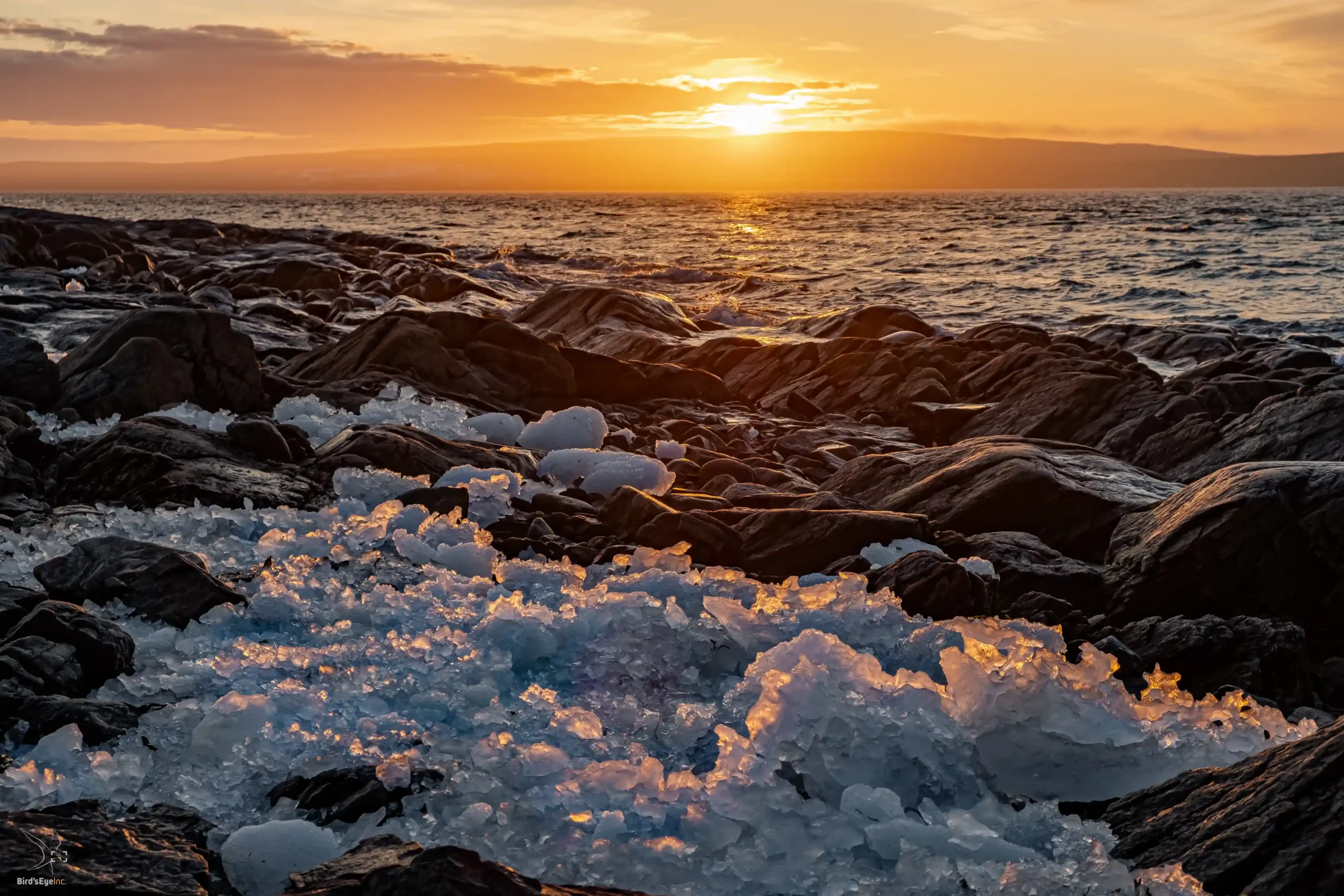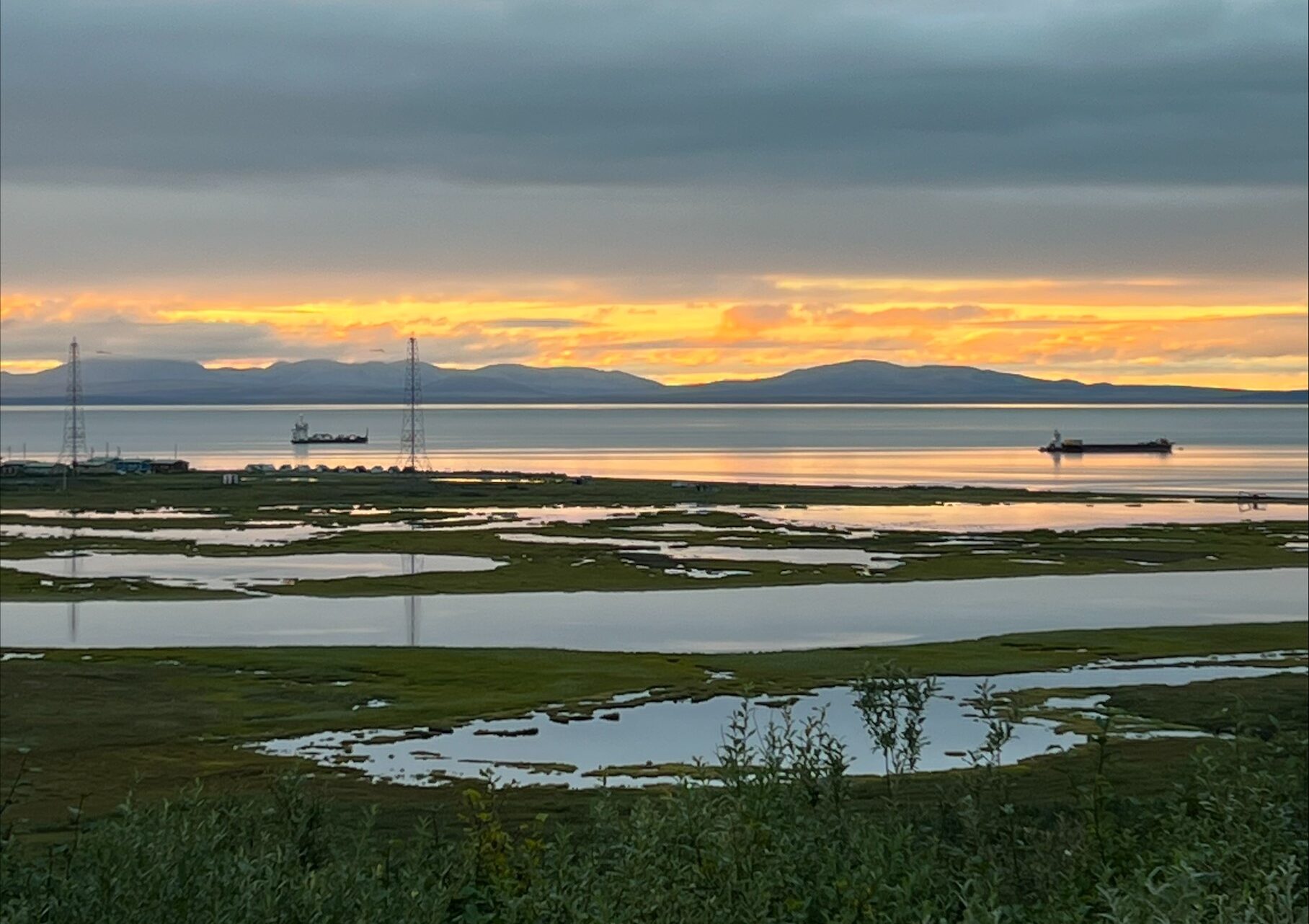The environment Inuit have lived in for millennia is changing fast. Canada’s government once ignored Indigenous knowledge of it but now they are jointly creating the Nunatsiavut conservation area.
A plume of red erupts in the grey-blue waters and Martin Shiwak accelerates his boat to grab the seal he has shot before the animal sinks out of sight. Shiwak has hunted for years in the waters of Lake Melville, by the Inuit community of Rigolet in Nunatsiavut.
As he hauls the ringed seal into the vessel, he says he counts himself lucky to have found one so quickly. “Sometimes you have to drive around here in the boat nearly all day to find a seal,” Shiwak says. “Nowadays you can’t even afford to – $60 only gets you five gallons of gas.”
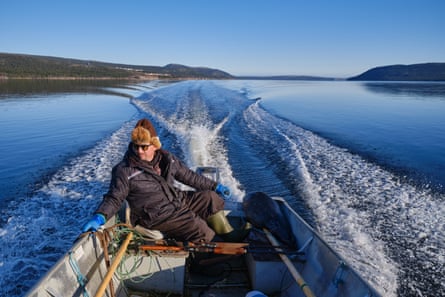
Nunatsiavut – one of four Inuit homelands in Canada – is where the subarctic becomes the Arctic. An autonomous region of Labrador-Newfoundland province, it is located at the extreme north-east corner of North America.
Winter temperatures here can average -30C (-22F) with the windchill, as the Labrador current brings Arctic ice floes down along the coast, and a host of marine life from, plankton to polar bears.
From November to June, shipping is impossible because sea ice covers the entire 9,320-mile (15,000km) coastline, so all food and supplies must be flown in. In Rigolet, a frozen 1.5kg (3.3lb) chicken will set you back $25 (£20). Hunting here is not just a tradition but a necessity.A pod of harp seals in the open sea around Nunatsiavut. With climate change, the period when Inuits usually switch from boats to snowmobiles to get around has been getting later and later every year.
On the rocky beach, Shiwak butchers the seal with precision, turning the water a bright crimson as crows caw overhead. As a young boy, he learned to hunt and fish with his father and grandfather, who in turn had learned these vital skills from their elders.
It is also how Shiwak learned the core Inuit values of taking only what is needed, sharing, sustainability and respect for nature – values he is passing down to his own children. Dane, 13, is at school but Shiwak knows he will want to be first to hear about the seal.

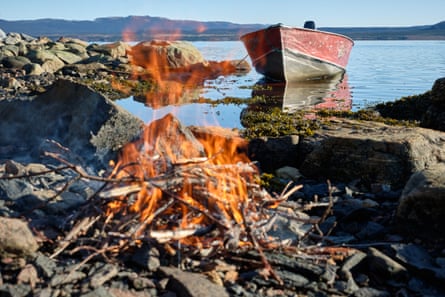
But while traditional knowledge has allowed Inuit to survive in this harsh environment for so long, the climatic conditions they rely on are changing quickly. Since 1950, Nunatsiavut has lost 40 days of ground snow a year. Its sea ice is vanishing faster than anywhere in the Canadian Arctic.
Normally at this time in November, the shoreline would be covered in ice, and people would be putting away their boats and dusting off their snowmobiles. In his lifetime, Shiwak has witnessed the winters becoming warmer, wetter, and shorter.
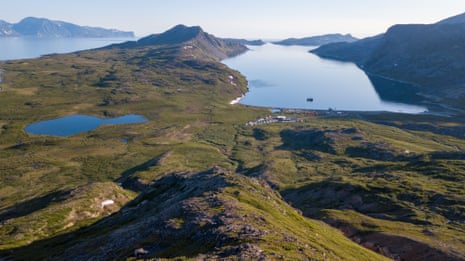
There is very little local people can do about that: although the region is roughly the size of the Republic of Ireland, Nunatsiavut’s population is less than 3,000, spread among five small towns.
What they can do, however, is work to protect what they have. That’s why Nunatsiavut is partnering with the Canadian government to co-develop the world’s first Inuit protected area.
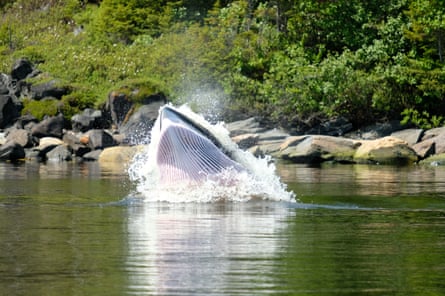
This unprecedented conservation zone, which is now the subject of a feasibility study, would span nearly 15,000 sq km (5,800 sq miles) of the Labrador Sea bordering the Torngat Mountains national park.
Built on Inuit values and culture, this new type of conservation area would allow Indigenous people to continue traditional practices of hunting and fishing.
That was not always the case. Past conservation policies saw Inuit at best only consulted and at worst completely ignored. Many Inuit hunters and fishers faced fines, had their equipment confiscated and their catches from hunting and fishing taken.
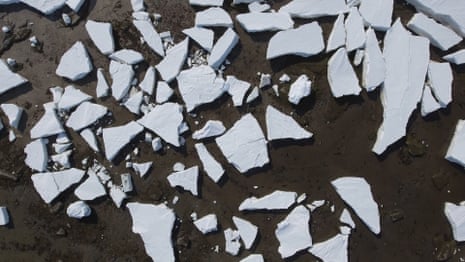
Despite being granted the power to self-govern in 2005 (after 30 years of negotiations with the Canadian government), Nunatsiavut still lacked the final say over conservation in its waters. Final decisions defaulted to federal or provincial ministers.
Now, at last, Nunatsiavut can jointly create and co-manage the protected area, based on Inuit priorities, as an equal authority. This will allow Inuit to practise traditional hunting and fishing in the area, while protecting the waters from industry and development.
“Just because we’re small doesn’t mean we can’t do something,” says James Goudie, deputy minister of lands and natural resources in the Nunatsiavut government. “We can show the world that a small region can protect a massive amount of biodiversity.”
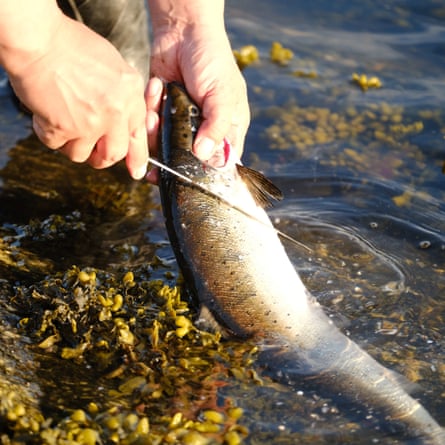
The Inuit protected area would only cover about a third of Nunatsiavut’s nearly 50,000 sq km of offshore waters, but the region is home to important populations of fish such as salmon and Arctic char, the breeding grounds for many migratory birds, and the habitat of Arctic marine mammals including polar bears, beluga whales and seals.
Establishing a protected area is also a pre-emptive strike against resource exploitation. Significant natural gas deposits have been found offshore along the Labrador shelf, but it has remained largely unexplored because of the ice. As the climate warms, however, the region is becoming more accessible – the Inuit protected area would prevent such resource exploration.
Goudie says Nunatsiavut does not oppose developing resources in its waters outside the protected area, but insists that it must benefit Inuit and cause negligible harm to the environment. Inuit are well positioned to lead Arctic marine conservation, he argues – and not just because they have a vested interest in protecting their home.
“Our connection and experience on the land is thousands of years in the making and that allows us a culturally based conservation ethic,” he says.
Traditional Inuit knowledge has been passed down orally through countless generations. Over time, the knowledge has accumulated nuances and observations: a dangerous rip-tide in a particular location, or how to properly prepare sealskin for a pair of boots.
This deep-rooted observational knowledge is often seen as at odds with science, but Goudie says they are complementary. For example, science can be used to tag and track animals to monitor their migration route, while Inuit knowledge can describe those animals’ behaviour and relationships to find the same route. Together, the two knowledge systems can enrich and fortify each other.

“Many studies show that biodiversity is highest on Indigenous-managed lands,” says Sigrid Kuehnemund, programme manager for national marine conservation areas with Parks Canada.
Kuehnemund is working with Nunatsiavut on the new proposal, hoping to build on Parks Canada’s existing relationship co-managing the Torngat Mountains national park. “It really helps Canada meet its commitments to support Indigenous life conservation, and it helps us meet our biodiversity goals, ensuring that Indigenous peoples have a primary role of leadership in managing protected areas.”
The Nunatsiavut government first looked to elders, hunters and fishers for guidance with their marine plan, called Imappivut. They realised that although the area is rich in Inuit knowledge, much scientific data is lacking: in such a remote, sparsely populated place, which is buried for months under sea ice, research is difficult and expensive.
One key missing dataset was how the ocean changes from year to year or season to season. There are also knowledge gaps on the ebb and flow in the biomass of plankton; how fish species such as salmon and Arctic char are connected to other ecological areas; and the seasonal changes in marine life on the ocean floor.
There is not even a clear understanding of how much ocean temperatures here have risen, let alone how much they might rise in future – hugely important for knowing whether invasive species such as the European green crab, which has been devastating marine environments along Canada’s Atlantic seaboard, could make its way here.
“To plan for the realities of climate change, you need to understand what is known and what is not,” says Rodd Laing, Nunatsiavut’s environment director, who is taking the lead on drawing up the Immapiavut marine plan. “You cannot measure change without knowing where you’ve come from.”
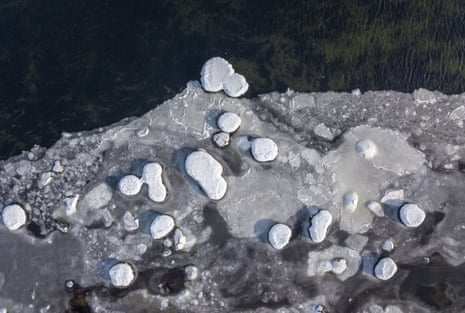
Laing’s department is working with government, researchers and environmentalists to catch up. They are setting up a network of monitoring moorings, and hydrophones to listen for species under the ice. They are also creating an eDNA database, which collects cells in the ocean to provide a much more detailed look at which species inhabit an environment than you could get by identifying those animals by sight.
The borders of the new area have not been finalised, with the feasibility report expected in 2024 or 2025. But Laing notes: “You don’t need lines on a map to recognise the great work that happened already with Inuit relative to conservation and the management of ecological resources.”
After all, he says, for countless generations of Inuit, conservation was not an option that could be ignored: it was a way to ensure there would be enough to eat, and enough next time as well.
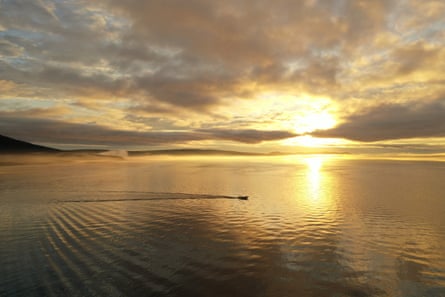
The sun getting is low over Rigolet, and the flat harbour mirrors the town, hills and sky. Shiwak plans to distribute the seal meat to relatives and neighbours, and is looking forward to telling Dane all about the hunt.
But while he is pleased Nunatsiavut is seeking community input on conservation, and believes the new Inuit protected area will help protect the marine animals his community rely on, he knows they cannot stop the changes in climate that are disrupting the traditional Inuit way of life. If the ice keeps arriving so late, he says, maybe one day they might need to build a road to Nunatsiavut.
Still, if Inuit culture is nothing if not adaptable, and Shiwak believes that if his children are going to continue to call Nunatsiavut home, then adapt they will. “They’re doing this already,” he says.
“They’re going to have to [manage] a lot of change to be able to survive. And if they don’t do that, they’re going to have to move on.”
This story was supported in part by a grant from the Pulitzer Center.
